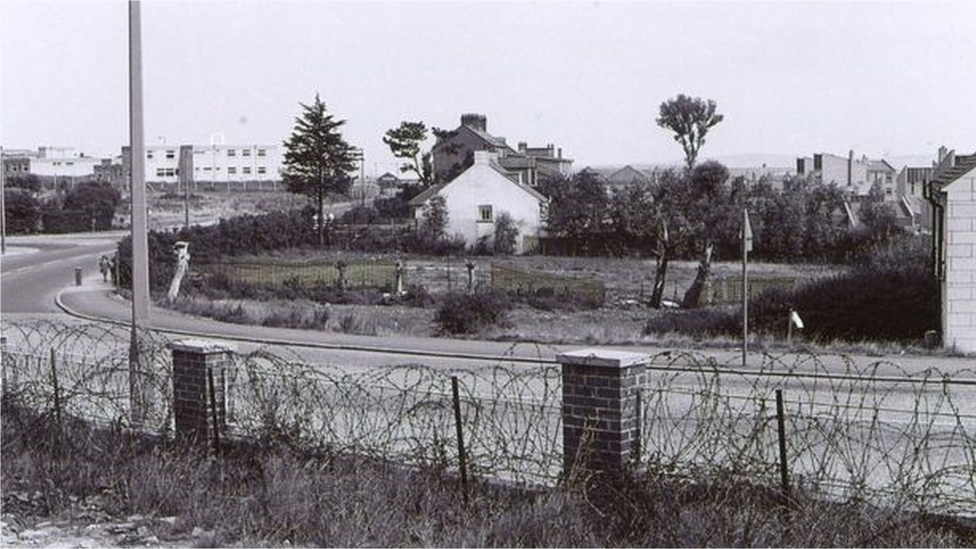Ballymurphy inquest: Joan Connolly 'could have lived'
- Published

An inquest is examining the deaths of 10 people killed in shootings at Ballymurphy in August 1971
The only woman to be killed during shootings in west Belfast might possibly have lived if she had received treatment, an inquest has heard.
Joan Connolly, a 44-year-old mother of eight, was one of 10 people fatally shot in Ballymurphy in August 1971.
An inquest is examining the shootings, which occurred amid disturbances sparked by the introduction of internment without trial.
Mrs Connolly was shot on waste ground opposite the Henry Taggart Army base.
The inquest has been hearing details from the post-mortem examinations of Mrs Connolly and three others - Daniel Teggart, Noel Phillips and Joseph Murphy - who were all fatally shot on the day internment was introduced.
The court heard the original reports from 1971, and also received a joint report from current pathologists acting for the coroner, Ministry of Defence and next of kin.

Manse field area opposite the Henry Taggart Hall
Mrs Connolly was shot up to three times with two serious wounds, one to her face and one to her thigh. There was a third injury to her hand.
The experts felt she was struck by a number of high-velocity bullets.
The court heard that she would have been conscious and possibly able to cry out for some time after her wounds were sustained.
The experts agreed that she would have ultimately bled to death.
Presenting the agreed joint report of the 2019 pathologists, Dr Benjamin Swift was asked if it was possible she might have survived her wounds if she had received early medical treatment.
"I believe so, yes," he said.

Soldiers from the Parachute Regiment were based at Henry Taggart Army base
The coroner has heard evidence that Mrs Connolly's body was brought to the Army base quite some time after the other bodies were recovered and had been left lying on the waste ground in the meantime.
Daniel Teggart, 44, died as a result of numerous wounds, which the experts felt came from high-velocity bullets.
His injuries suggested he might have been struck as many as 14 times, sometimes possibly by fragments of bullets.
The father-of-13 did not receive his wounds at the same time, and would have been conscious after his initial injuries.
Noel Phillips, 19, had received a non-fatal wound to his wrist and buttocks, as well as two wounds to his neck, one on each side.
A 9mm bullet was recovered, such as might come from a pistol or a sub-machine gun.
Dr Swift agreed it was possible that the 9mm bullet could have been fired from the general immediate area of some waste ground where Mr Phillips was found, but not from a close range of less than a metre.
Joseph Murphy, 41, died due to septicaemia 13 days after he was shot in the thigh. His right leg had been amputated.
More evidence about Mr Murphy's injuries is due to be heard later in the week.
- Published10 May 2019

- Published9 May 2019

- Published8 May 2019

- Published7 May 2019

- Published11 May 2021
